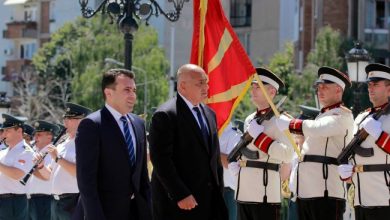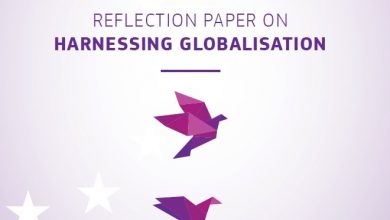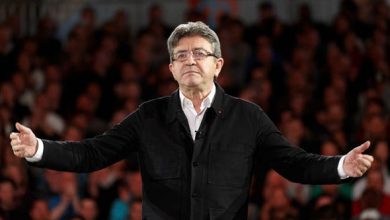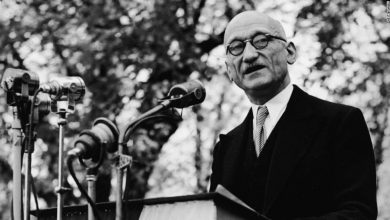Europa – Should We Create a New European Capital?

Why Build a New Capital?
What do Abuja (Nigeria), Astana (Kazakhstan), Naypyidaw, (Myanmar) and Sejong (South Korea) have in common? All were planned cities built in the 21st Century, breaking virgin ground to house a new national capital. These efforts to replace overcrowded national capitals and begin afresh with the aid of urban planning and modern technology are expensive but determined efforts to shape their national history and forge new modern identities.
Other capitals planned and built to accommodate national governments some time ago sought a similar national renaissance. These national capitals, proven by time as viable urban settings, have become very familiar to us: Washington DC, built on reclaimed swampland in the 1800s, designed by French architect L’Enfant; Canberra, Australia, a century later designed by the Chicago architect Walter Burly Griffin; and Brasília (Brazil) inaugurated in 1960, are prominent examples. On a smaller scale than these national capitals, also Chandigarh, India, a regional capital for the states of Punjab and Haryana, was built, designed in large part by French architect Le Corbusier. Le Corbusier worked with numerous sociological and urban concepts to make the city function optimally for its inhabitants.
Besides those purposed on the relocation of their capital and administrative functions, there are many new preplanned cities for diverse purposes around the world. In Europe, beginning in the 1970s, Louvain-la-Neuve was built on agricultural land not far from Brussels. Its aim was the expansion of the French sections of the historic University in Leuven, a medieval city in nearby Flanders, Belgium.

Other new capital cities are currently underway in Egypt, on the outskirts of Cairo, along with new planned urban developments as the one in Amaravati, India. India itself has several fully planned cities as does China. If we begin to look at smaller planned units, towns and dedicated developments, the examples become too numerous to cite. Listed under ‘planned cities’ one can find several hundred of examples around the world: most European countries have several smaller ones; India and Israel standing out for numerous planned urban centers.
Advantages of a planned city are numerous. Especially with the modern imperative of reducing carbon emissions and taking advantage of digital technology, they can revolutionise urban living. More traditional motives are at play too, like: decongestion, esthetics and indeed national unity, as the new capitals served to unite diverse regions and urban interests in one national center. Integrating social classes and income groups has been an imperative of many projects. When the United States, Australia and Brazil built their capitals they were new countries cobbled together seeking to achieve national unity, a motive in the new construction which determined all the rest.
A Proposed Model for Europe
Europe is hardly a new country but, in an important sense, the European Union is new. There were European unions in the past with well recognized capitals: the Roman Empire with the seat of government in Rome and the Holy Roman Empire with the court of Charlemagne in Aachen. Today’s European Union, though, has no distinct capital.

There is Brussels, Belgium, seat of the European Commission and most of the administrative offices. The EU Parliament has its own dedicated parliamentary building in Strasbourg, France, as well as one in Brussels. The EU Central Bank is located in Frankfurt, Germany; the European Court of Justice in Kirchberg, Luxembourg. The Council of Ministers adapts its venue to the EU Council Presidency which rotates every six months to a different Member State.
Would a new EU capital built afresh create the type of unity other national capitals have tried to embody with differing success? My suggestion would be to try through a series of modest steps. The first of these would be to create a European wide architectural competition to build a Museum of European Culture and European Cultural Center. Building is something which Europeans excel at and like to do. Many of the world’s greatest architects and firms have a European pedigree and address. To name just a few of the more prominent, listed among the top ten architects worldwide, we can remember Renzo Piano (Italy), Jean Nouvel (France), Santiago Calatrava (Spain) or Peter Zumthor (Switzerland). Many of the world’s planned cities were designed by Europeans.
The Museum of European Culture and European Cultural Center, home to a vast modern edifice containing multiple cultural and media displays and venues, should be built at the geographic center of Europe to make its purpose clear. That center is located by geographers of the French Institut Géographique National (IGN) a bit south of Cologne on the German side of the Rhine, 40 km east of Frankfurt, Germany. Once finished, proceeds from visits to the museum and cultural events would be used to begin work on the new city ‘Europa’ springing up around it, taking care that bids and contracts include all European countries.
The project could function a bit like Air Bus Industries: on the outskirts of Toulouse, but receiving manufacturing and engineering inputs from all over Europe. Air Bus is a remarkable and truly European venture. Late at night on the road to Toulouse one can see the jet engines from the UK, fuselages from Germany or tail assemblies from Spain being hauled on massive lorries into the Air Bus warehouses for further assembly. So too might diverse Member States participate in building Europa. Eventually, when ready, the Parliament and other EU Offices would be moved to Europa creating a veritable European capital, source of pride and identity.
Guest article by Stephen Sposato. This content does not necessarily reflect the official opinion of My Country? Europe. Responsibility for the information and views expressed therein lies entirely with the author.
About the Author: Stephen Sposato is an American who received his Masters in Economic Development from the Rijksuniversiteit Gent and a second Masters in Theoretical Economics from the Universite de Louvain. He has lived an important part of his 72 years in Europe where he has also worked on East European reconstruction. He speaks a number of European languages fluently (English, French, Dutch and some German).





